Angie at The Counselling Space, Coffs Harbour, is an accredited Mental Health Social Worker, and is trained in focused psychological therapies including Narrative Therapy, Cognitive Behavioural Therapy (CBT), and Motivational Interviewing.
She has also completed training internationally in Eye Movement Desensitisation and Reprocessing (EMDR) and Brainspotting. These brain-based therapies are the fastest-growing area in the field of psychological health, with research confirming they can immediately address issues that can take talk therapy many years to heal. Angie also draws on Somatic Psychotherapy and HeartMath Biofeedback – recognising that sometimes our body needs to know how to calm itself, feel nurtured and be strong to help our mind tackle the issues in our lives.
Angie’s extensive experience enables her to work with people with all sorts of issues, worries and concerns, including anxiety, depression, eating disorders, complex trauma, the impact of violence/abuse and deep grief.
You can see Angie privately, without a referral, or you can ask your GP (doctor) for a Mental Health Care Plan which will provide a rebate to assist with some of the cost (please note, we are unable to Bulk Bill). The Counselling Space works with both plan and self managed NDIS participants, and you are welcome to talk with us or your Coordinator of Supports about developing a Service Agreement with you. (Angie is also accredited to work with people referred under Victims Services NSW and Qld and with NSW WorkCover clients, however is not taking new referrals in these areas at this time.)
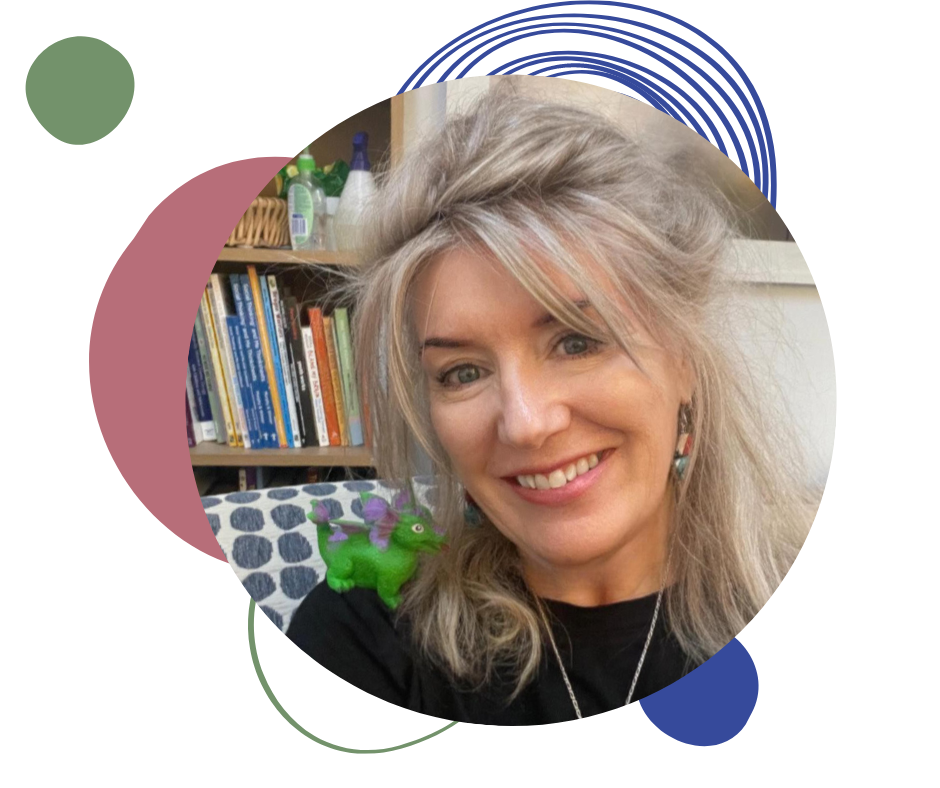
Eye Movement Desensitisation and Reprocessing (EMDR)
How does EMDR work?
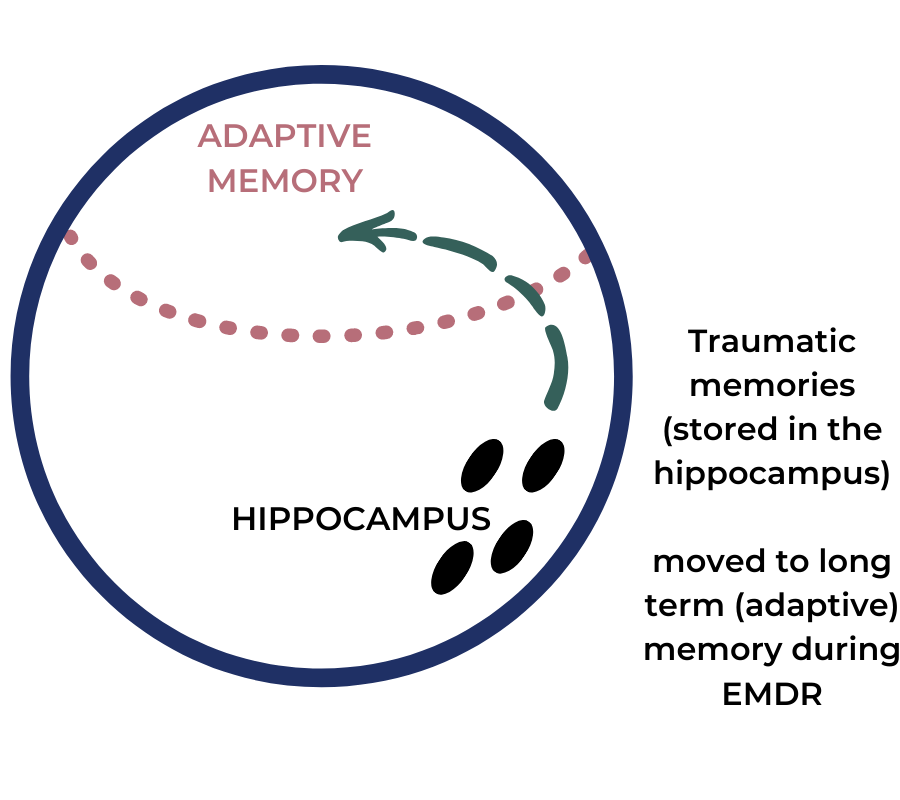 When we experience something, our brain creates a short-term memory of the experience in a part of our brain called the hippocampus. These short term memories are later consolidated to long term/adaptive memory in another part of our brain called the cortex.
When we experience something, our brain creates a short-term memory of the experience in a part of our brain called the hippocampus. These short term memories are later consolidated to long term/adaptive memory in another part of our brain called the cortex.
This memory consolidation occurs naturally, during our sleep. While we are dreaming, during the period of sleep known as “rapid eye movement or REM sleep”, memories are moved out of the hippocampus, processed and stored in the area of adaptive memory in our cortex. It is the brain’s way of sorting things into filing cabinets.
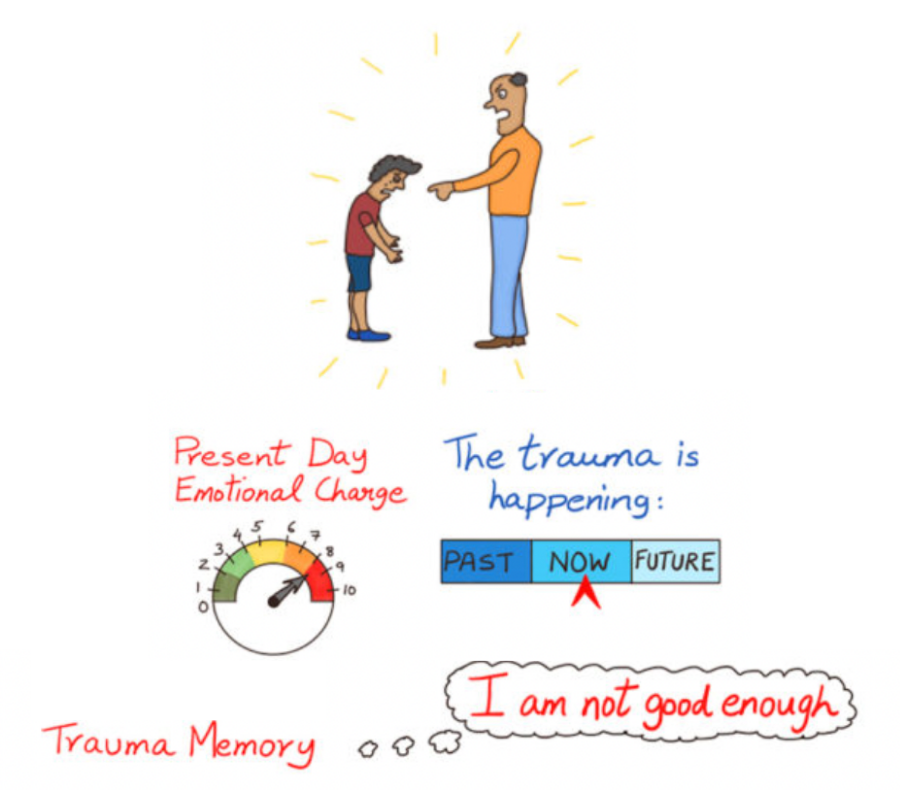 With traumatic memories, however, the brain has trouble processing them and they can become stuck in the hippocampus, our short term memory storage area. When something reminds us of the memory - a glimpse, a smell, a voice or any other reminder - it can trigger strong feelings, as if we were experiencing them in the present. Our rational, thinking part of our brain becomes overwhelmed with emotion. Traumatic memories can remain stuck in the hippocampus for many years, resulting in flashbacks, intrusive thoughts, negative self beliefs and triggered emotions. Sleep can be impacted, as our brain continues to try and process the memories into adaptive memory.
With traumatic memories, however, the brain has trouble processing them and they can become stuck in the hippocampus, our short term memory storage area. When something reminds us of the memory - a glimpse, a smell, a voice or any other reminder - it can trigger strong feelings, as if we were experiencing them in the present. Our rational, thinking part of our brain becomes overwhelmed with emotion. Traumatic memories can remain stuck in the hippocampus for many years, resulting in flashbacks, intrusive thoughts, negative self beliefs and triggered emotions. Sleep can be impacted, as our brain continues to try and process the memories into adaptive memory.
EMDR therapy replicates our REM (dream) sleep, helping our brain to process the traumatic memories. During EMDR, therapists help you focus on a traumatic memory while providing bilateral stimulation. Bilateral just means one side and then the other - in EMDR this is usually moving your eyes from side to side (such as in REM sleep), but it can also be hearing a sound on each side or experiencing a light touch on each side.
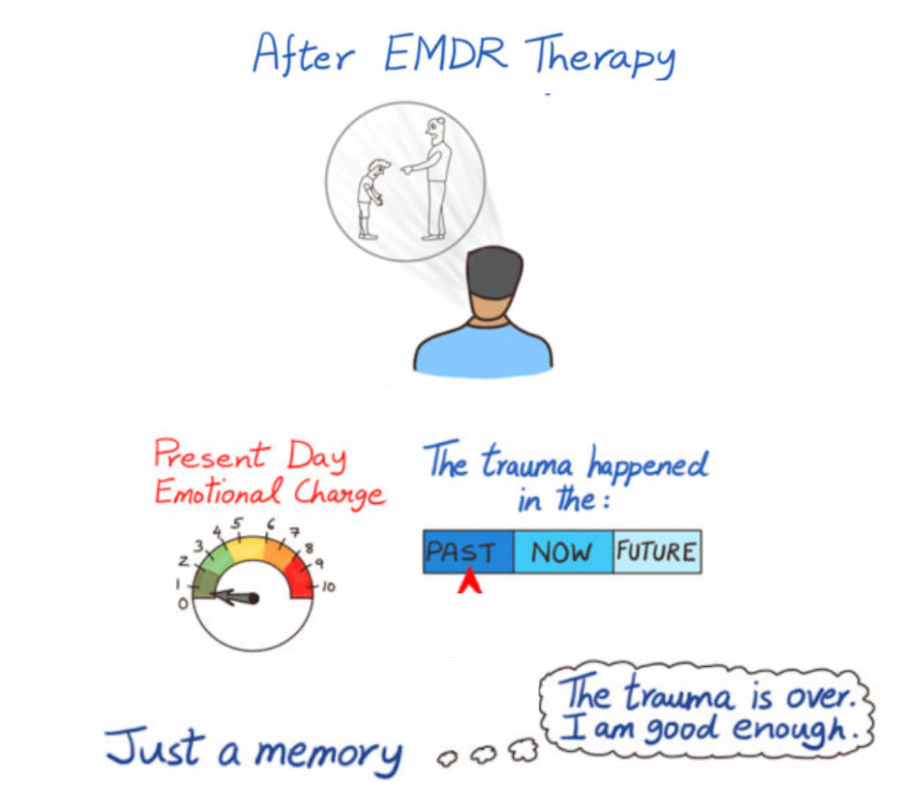 Research suggests that EMDR synchronises brain activity in our cortex at the same delta frequency as slow-wave sleep. Traumatic memories are reactivated, processed and moved across to existing, adaptive memory networks. In this way they are moved from being stuck in the hippocampus, into long term memory storage, just like other, non-traumatic memories. Now when we recall those traumatic memories, we can remember what happened, but our brain knows it occurred in the past and our emotions are not triggered in the present.
Research suggests that EMDR synchronises brain activity in our cortex at the same delta frequency as slow-wave sleep. Traumatic memories are reactivated, processed and moved across to existing, adaptive memory networks. In this way they are moved from being stuck in the hippocampus, into long term memory storage, just like other, non-traumatic memories. Now when we recall those traumatic memories, we can remember what happened, but our brain knows it occurred in the past and our emotions are not triggered in the present.
EMDR is now considered the ‘gold standard’ treatment for trauma and many mental health concerns. It is colloquially referred to as REM sleep on steroids, as it supports your brain to do what it does every night when you dream during REM sleep.
If you would like to find out more, I recommend the EMDR Association of Australia website. This is a professional association where EMDR practitioners and researchers set standards for the clinical use of EMDR. Here is a link to their FAQ page:
Please feel welcome to contact me at The Counselling Space, Coffs Harbour, if you would like to see if EMDR may be appropriate for you or your child.
Brainspotting
"Where you look affects how you feel." - David Grand ~ Developer of Brainspotting
Brainspotting (BSP) is a relatively new therapy. It was discovered by accident by David Grand, Ph.D. in 2003, while in the process of developing a new form of EMDR, called Natural Flow EMDR.
It is a powerful, focused treatment method that works by identifying, processing and releasing core neurophysiological sources of emotional/body pain, trauma, dissociation and a variety of other challenging symptoms. Brainspotting is enhanced with Biolateral sound, which is deep, direct, and powerful yet focused and containing.
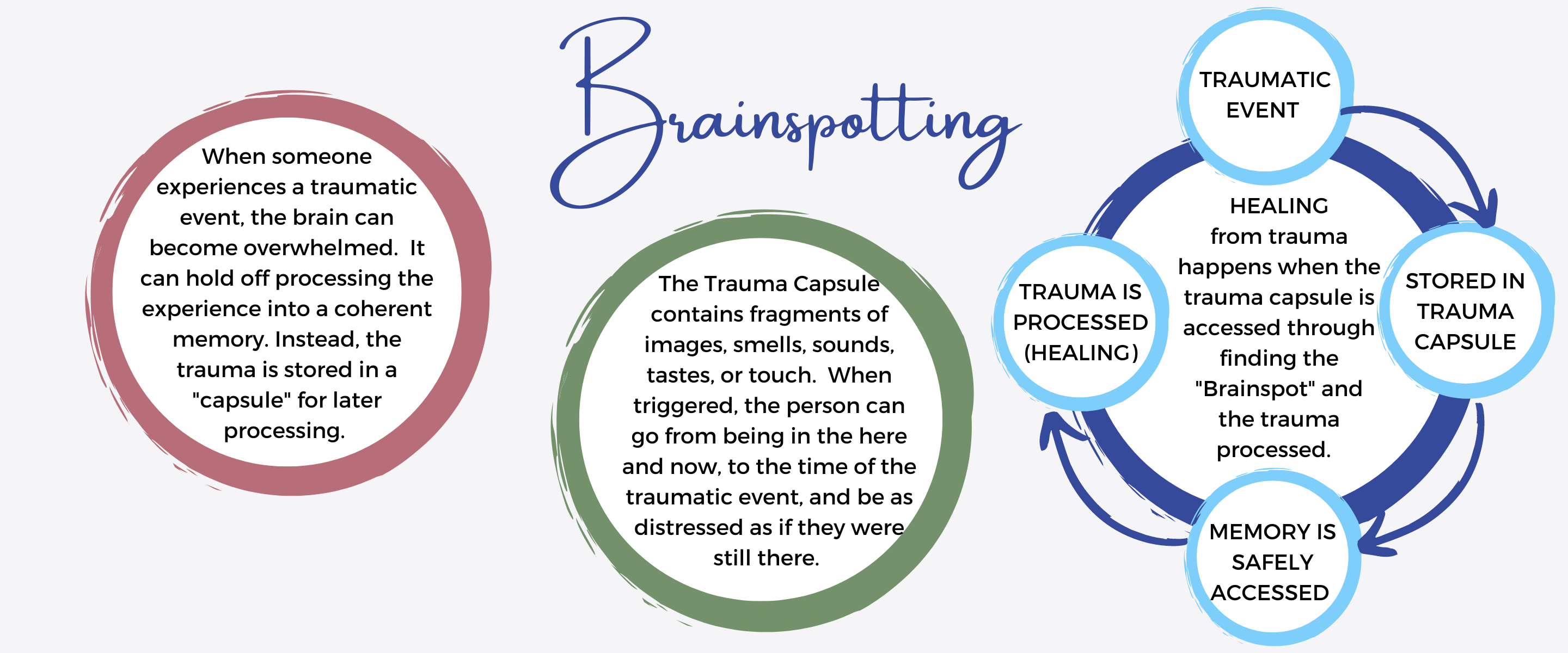
It does so by finding the specific eye positions that directly connect to where stress or trauma are stored in the brain so they can be intentionally processed. Brainspotting directly accesses our deeper brain where emotionally charged experiences are stored.

